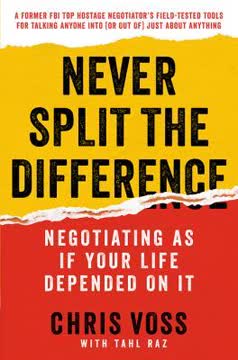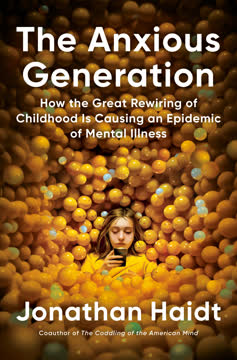Key Takeaways
1. Understand Your Subconscious Drives to Make Better Decisions
You are attempting to find logic and an explanation for a random series of events.
Subconscious motivations shape our decisions more than we realize. Understanding these drives can significantly improve our decision-making process. Three key models help us understand our subconscious needs:
-
Maslow's Hierarchy of Needs
- Physiological fulfillment
- Safety
- Love and belonging
- Self-esteem
- Self-actualization
-
Tony Robbins' Six Fundamental Human Needs
- Certainty
- Uncertainty and variety
- Significance and uniqueness
- Connection
- Growth
- Contribution
-
Max-Neef's Fundamental Human Needs
- Subsistence
- Protection
- Affection
- Understanding
- Participation
- Leisure
- Creation
- Identity
- Freedom
By identifying which needs drive us, we can make more conscious decisions aligned with our true motivations and values.
2. Recognize and Overcome Cognitive Biases in Decision-Making
We prefer simplicity in all walks of life, and that means the decisions that seem the simplest, or with the least amount of moving parts, are almost always going to be preferred.
Cognitive biases are mental shortcuts that can lead to poor decision-making. Some common biases include:
- Preferring simplicity
- Relying on contrast
- Avoiding all loss
- Reducing risk
- Unconscious bias
- Confirmation bias
- Gambler's fallacy
- Rosy retrospection
To overcome these biases:
- Question your initial beliefs and assumptions
- Seek out diverse perspectives
- Analyze decisions from multiple angles
- Be aware of your emotional state when making choices
By recognizing and actively working to counteract these biases, we can make more rational and effective decisions.
3. Move Beyond Simple Pros and Cons Lists
It's simple and easy. It gives you a way to analyze your choices based on what appears to be important.
While pros and cons lists can be helpful for simple decisions, they often fall short for complex choices. To improve this method:
- Quantify the importance of each factor (0-10 scale)
- Consider different interpretations of results:
- Choose the side with the higher total
- Only act if pros are twice the value of cons
- Adapt the quantification to specific situations:
- Money saved
- Time saved
- Goal achievement
- Emotional impact
- Identify fixed factors vs. those subject to change
- Use this process to uncover what's truly important to you
- Address key factors independently when possible
By adding depth and nuance to the traditional pros and cons list, you can make more informed and personalized decisions.
4. Manage the Ego's Influence on Your Choices
When we act for social acceptance, we are looking for validation and a sense of being heard.
The ego's influence on decision-making can be significant and often detrimental. Common ego-driven behaviors include:
- Blaming others
- Denial
- Rationalization
- Seeking social acceptance
To manage the ego's impact:
- Practice self-awareness and honesty
- Recognize when you're acting out of fear or insecurity
- Embrace being wrong as a natural part of growth
- Focus on facts and evidence rather than rationalizations
By acknowledging and mitigating the ego's influence, we can make decisions based on reality rather than self-protective instincts.
5. Use the Six Hats Method for Comprehensive Decision Analysis
The Six Hats Method presents you with a veritable checklist to run through while you try to make a decision, which ensures that all your bases are covered.
Edward de Bono's Six Hats Method provides a structured approach to decision-making:
- White Hat (Sherlock Holmes): Focus on gathering and analyzing information
- Red Hat (Freud): Explore emotions and intuitions
- Black Hat (Eeyore): Identify potential problems and risks
- Yellow Hat (Cheerleader): Consider benefits and opportunities
- Green Hat (Pablo Picasso): Generate creative solutions and alternatives
- Blue Hat (Henry Ford): Manage the decision-making process and integrate perspectives
By systematically examining a decision from these different angles, you can ensure a more thorough and balanced analysis.
6. Overcome Analysis Paralysis and Indecision
Analysis paralysis isn't just a fancy, rhyming term. It's a real problem that can hold you back from everything you hold dear in life, from your personal to professional areas.
To beat analysis paralysis:
- Realize most decisions are reversible
- Apply strict filters and boundaries
- Aim for "good enough" rather than perfect
- Engage in intentionally judgmental thinking
- Set a default action and time limit
- Use the 80/20 Pareto Principle: 80% of value comes from 20% of effort
- Remember that aiming for perfection often leads to diminishing returns
- Practice making quicker decisions on small matters to build confidence
By implementing these strategies, you can overcome indecision and make more timely choices without sacrificing quality.
7. Navigate Group Decision-Making Effectively
Group decisions can be a delicate, ineffective process, but they can also shed light into your greatest blind spots if you let them.
Group decision-making has both advantages and challenges. To maximize its effectiveness:
-
Choose the appropriate approach:
- Dictatorial
- Consultative
- Voting
- Consensus
-
Use techniques like:
- Ranking votes
- Multiple votes per person
- Nominal group technique
- Address groupthink by encouraging diverse perspectives
- Create a safe space for open communication
- Implement policies like "No Interruption" or "No Bad Idea"
By leveraging the strengths of group decision-making while mitigating its weaknesses, you can achieve more balanced and insightful outcomes.
8. Harness Emotions for Better Decision-Making
If you completely suppress your taste buds, you lose the ability to taste. At that point, what drives your food preference?
While emotions can sometimes lead to poor choices, they are also essential for decision-making. Research shows that people with impaired emotional processing struggle to make even simple decisions.
Emotions contribute to decision-making by:
- Providing rapid responses based on past experiences
- Offering intuitive insights that logic might miss
- Motivating action and commitment to choices
To harness emotions effectively:
- Recognize and acknowledge your feelings
- Identify how emotions might be influencing your perspective
- Balance emotional input with logical analysis
- Be aware of external emotional influences (e.g., Cialdini's six weapons of influence)
By integrating emotional intelligence with rational thinking, you can make more holistic and satisfying decisions.
9. Apply the WRAP Method for Optimal Choices
WRAP makes you look past those shortcuts and do the work, so to speak, in four thorough steps.
The WRAP method, developed by Chip and Dan Heath, provides a comprehensive framework for decision-making:
W - Widen your options
- Look beyond obvious choices
- Consider multiple alternatives
- Combine elements of different options
R - Reality-test your assumptions
- Seek out diverse perspectives
- Test ideas in small-scale experiments
- Consider potential obstacles and how to overcome them
A - Attain distance
- Step back from immediate emotions
- Consider long-term consequences
- Ask what you'd advise a friend to do
P - Prepare to be wrong
- Anticipate both positive and negative outcomes
- Create contingency plans
- Set up tripwires to signal when to reassess
By following this method, you can make more thorough, well-considered decisions that account for a wide range of factors and potential outcomes.
Last updated:
FAQ
What is "The Science of Intelligent Decision Making" by Peter Hollins about?
- Comprehensive guide to decisions: The book explores the science and psychology behind how we make decisions, aiming to help readers think more clearly, save time, and maximize happiness.
- Focus on practical methods: Peter Hollins provides actionable frameworks, mental models, and checklists to improve decision-making in personal and professional life.
- Addresses common pitfalls: It delves into why people struggle with indecision, cognitive biases, and emotional influences that lead to sub-optimal choices.
- Goal of the book: The ultimate aim is to help readers destroy indecision and become more confident, effective decision-makers.
Why should I read "The Science of Intelligent Decision Making" by Peter Hollins?
- Understand your own mind: The book helps you uncover subconscious motivations and cognitive traps that affect your choices.
- Practical improvement: It offers step-by-step methods and mental checklists to make better, faster, and more satisfying decisions.
- Applicable to all areas: Whether for career, relationships, or daily life, the advice is relevant and actionable.
- Boosts confidence and happiness: By learning to avoid indecision and poor choices, you can save time, reduce stress, and increase your overall well-being.
What are the key takeaways from "The Science of Intelligent Decision Making"?
- Subconscious drives matter: Most decisions are influenced by subconscious needs and desires, which can be understood through models like Maslow’s Hierarchy of Needs.
- Decision fatigue is real: Your ability to make good decisions decreases with stress, fatigue, and too many trivial choices.
- Cognitive biases are traps: Recognizing and counteracting biases like loss aversion, confirmation bias, and the zero-risk bias is crucial.
- Structured methods help: Using frameworks like the Six Hats Method, WRAP, and quantified pros and cons lists leads to better outcomes.
How does Peter Hollins define and address indecision in "The Science of Intelligent Decision Making"?
- Indecision as analysis paralysis: Hollins describes indecision as being stuck due to fear of making the wrong choice or seeking perfection.
- Root causes: It often stems from lack of confidence, fear of judgment, and overwhelming options.
- Actionable solutions: The book suggests setting boundaries, using default choices, and aiming for “good enough” rather than perfect.
- Reversibility of decisions: Hollins emphasizes that most decisions are reversible, so taking action is usually better than endless deliberation.
What are the main decision-making models and frameworks discussed in "The Science of Intelligent Decision Making"?
- Maslow’s Hierarchy of Needs: Explains how unmet needs at different levels drive our decisions.
- Tony Robbins’ Six Human Needs: Outlines certainty, variety, significance, connection, growth, and contribution as key motivators.
- Max-Neef’s Fundamental Human Needs: Adds nuance with nine needs, including subsistence, protection, affection, and freedom.
- Six Hats Method: Encourages viewing decisions from six perspectives—logical, emotional, pessimistic, optimistic, creative, and organizational.
- WRAP Method: Stands for Widen your options, Reality-test assumptions, Attain distance, and Prepare to be wrong.
How does "The Science of Intelligent Decision Making" by Peter Hollins explain cognitive biases and decision traps?
- Definition of cognitive biases: These are mental shortcuts or errors in thinking that lead to flawed decisions.
- Common biases covered: The book details simplicity preference, contrast effect, loss aversion, zero-risk bias, unconscious bias, confirmation bias, gambler’s fallacy, and rosy retrospection.
- Impact on choices: These biases can cause you to ignore relevant information, overvalue certain options, or make irrational decisions.
- Strategies to counteract: Hollins recommends self-awareness, questioning assumptions, and using structured frameworks to minimize bias.
What is the Six Hats Method in "The Science of Intelligent Decision Making" and how can it improve decisions?
- Six perspectives: The method involves “wearing” six different hats—white (facts), red (emotions), black (pessimism), yellow (optimism), green (creativity), and blue (organization).
- Holistic analysis: By systematically considering each perspective, you ensure all angles are covered and avoid tunnel vision.
- Practical application: Assigning hats to group members or yourself helps structure discussions and decision processes.
- Reduces blind spots: This method helps uncover hidden factors and balances emotional and logical considerations.
How does Peter Hollins recommend using pros and cons lists in "The Science of Intelligent Decision Making"?
- Quantify importance: Assign numerical values (0-10) to each pro and con based on significance, rather than treating all factors equally.
- Compare totals: Make decisions based on which side has a higher total value, or require the pros to outweigh cons by a significant margin before acting.
- Adapt to context: Tailor the criteria (money, time, happiness, etc.) to fit the specific decision at hand.
- Identify alternatives: Sometimes, analyzing the list reveals that addressing a single factor (e.g., comfort) is more effective than making a major change.
What is decision fatigue according to "The Science of Intelligent Decision Making" by Peter Hollins, and how can you avoid it?
- Definition: Decision fatigue is the decline in decision quality after making too many choices, due to limited mental resources.
- Symptoms: Leads to impulsive decisions or procrastination, especially later in the day or after many trivial choices.
- Prevention strategies: Make important decisions early, automate or ignore trivial choices, and take breaks to recharge.
- Role of stress: Stress and anxiety further deplete decision-making capacity, so managing them is essential for good choices.
How does "The Science of Intelligent Decision Making" address the role of emotions and ego in decision-making?
- Emotions are inevitable: The book explains that emotions can’t be separated from decisions and are necessary for motivation and action.
- Ego’s defense mechanisms: Blaming, denial, and rationalization protect self-esteem but can distort reality and lead to poor choices.
- Social acceptance: Fear of judgment and desire for approval often drive sub-optimal decisions.
- Self-awareness is key: Recognizing emotional and ego-driven influences allows for more honest and effective decision-making.
What is the WRAP method in "The Science of Intelligent Decision Making" by Peter Hollins, and how does it work?
- Widen your options: Don’t settle for the first or most obvious choices; generate more alternatives.
- Reality-test your assumptions: Challenge your ideas, seek disconfirming evidence, and stress-test your plans.
- Attain distance: Step back emotionally and give yourself time before finalizing a decision.
- Prepare to be wrong: Plan for failure by having backup options and being ready to adapt if things don’t go as expected.
What are the best quotes from "The Science of Intelligent Decision Making" by Peter Hollins and what do they mean?
- “The real key is to think about what you’re thinking, and pay attention to what you’re paying attention to.”
- Encourages meta-cognition and self-awareness as the foundation of smart decisions.
- “Perfect is the enemy of good enough.”
- Warns against analysis paralysis and the pursuit of unattainable perfection.
- “If you aren’t behind an option with a huge degree of certainty, then it’s as good as a lack of support.”
- Advocates for the “heck yes or no” approach to avoid lukewarm, regretful choices.
- “You can’t remove emotion from the decision-making process because it’s part of your personal logic.”
- Reminds readers that emotions are integral, not obstacles, to making choices.
- “When you have more information about yourself, everything else becomes clearer instantly. Fixate on your priorities; almost everything else is chatter.”
- Stresses the importance of self-understanding and focusing on what truly matters.
Review Summary
The Science of Intelligent Decision Making receives mixed reviews, with an average rating of 3.91/5. Readers appreciate its concise overview of decision-making concepts and psychological biases. Some find it a great introduction, while others desire more depth and practical applications. The book is praised for its accessibility and potential to improve decision-making skills. However, criticisms include its brevity, lack of comprehensive frameworks, and occasional formatting issues. Overall, it's considered a quick, informative read that provides valuable insights into the psychology of decision-making.
Similar Books










Download PDF
Download EPUB
.epub digital book format is ideal for reading ebooks on phones, tablets, and e-readers.














